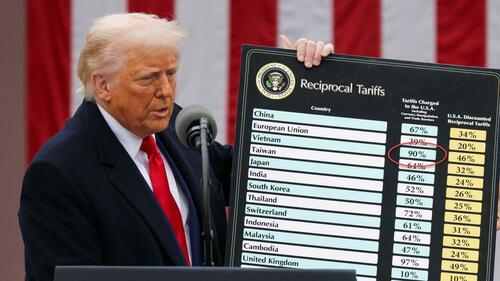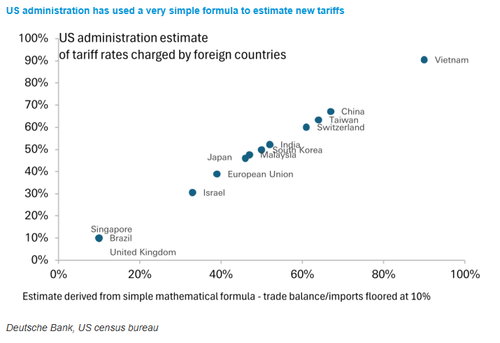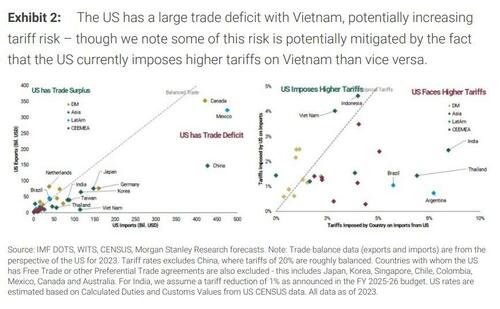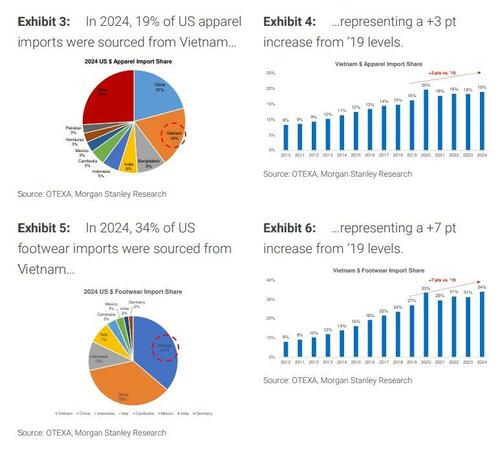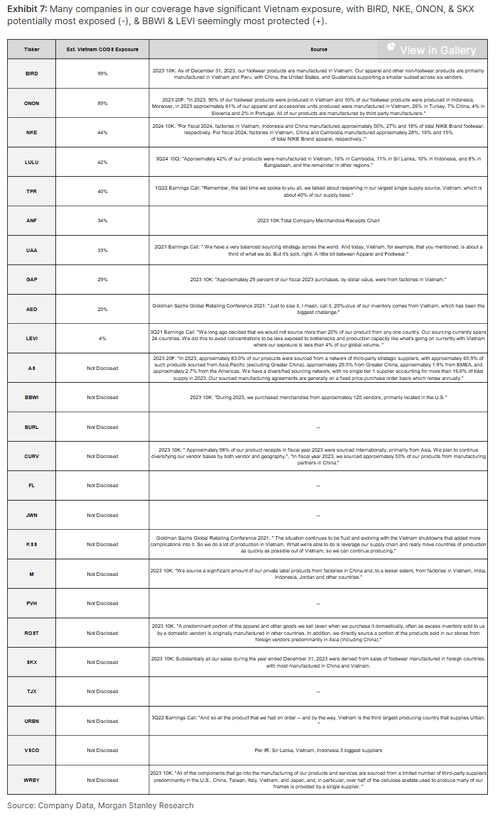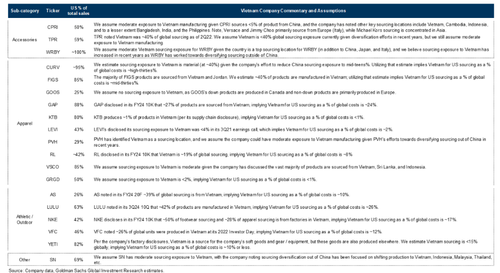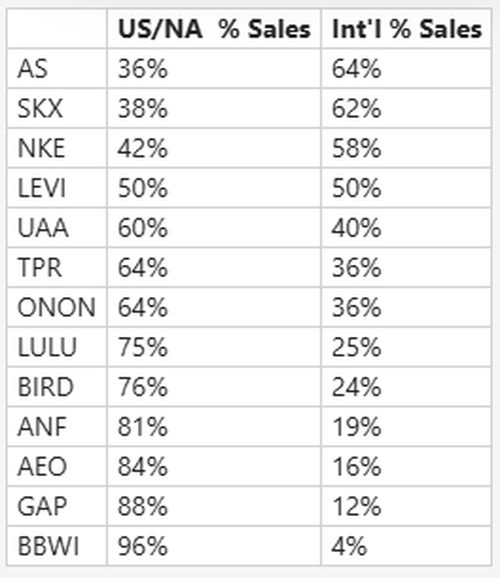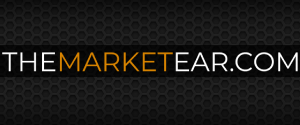These Companies Are Getting Crushed Due To Their Vietnam Exposure
There was widespread shock yesterday when Trump unveiled his reciprocal tariffs (which as we learned were not actually "reciprocal", but more accurately punitive Ricardian retribution sentences), but few were as surprised as exporting powerhouse - and the country China has been using for the past decade to circumvent Trump tariffs - Vietnam, which got slapped with a whopping 46% reciprocal tariff...
... the result of what we now know is simply the ratio of Vietnam's bilateral trade deficit divided by US imports from the country (for two discussions on this simplistic assessment of the Vietnam tariff read this and this).
No matter how Vietnam's reciprocal tariffs were derived however, a whole lot of companies which source goods in the country are now in trouble.
Now, we could just tell you to find the companies that are down the most today to find out who is most at risk but... well, everyone is down the most.
So instead, we'll point your attention to a recent research report from Morgan Stanley titled "Vietnam Tariff Risk – A Potential Headwind You Should Be Monitoring" (and available to pro subs in the usual place), in which the bank correctly predicted that "the new Trump administration’s heightened focus on trade deficits means Vietnam could emerge as another meaningful tariff headwind to Softlines businesses."
To be sure, and as we also noted previously, while China was the focus of the ’18-’19 trade conflict, the new Trump administration has indicated that trade imbalances are at the center of current tariff considerations. Given the US has a trade deficit with the majority of its trading partners, this could broaden the tariff scope to a much wider range than in ’18-’19.
As Morgan Stanley noted (correctly) back in February, Vietnam stood out as having potential risk here, "as it has among the highest trade deficits with the US (e.g., the US has a ~$120B trade deficit with Vietnam)." Also, looking at the chart below, we may know who is responsible for the Admin's unique definition of a "reciprocal" tariff.
And while Morgan Stanley predicted that the US currently imposes higher tariffs on Vietnam than vice versa – potentially mitigating some of this risk, this turned out to be wrong; where the bank was spot on is that in its view "the possibility of Vietnam tariffs has not been a focus of the market, & thus isn’t fully priced in/understood in the same way the potential China impact is."
Bingo.
So who are the companies with largest exposure to Vietnam?
Morgan Stanley writes that Vietnam sourcing exposure in its coverage is significant – particularly for footwear names – with BIRD, NKE, ONON, & SKX potentially most exposed (-), and BBWI & LEVI seemingly most protected (+). In 2024, 19% of US apparel imports & 34% of US footwear imports were sourced from Vietnam – up +3 pts & +7 pts, respectively, from ’19 levels (with Vietnam the largest beneficiary from diversification out of China in this time period).
This makes Vietnam the largest footwear importer & 2nd largest apparel importer into the US. This high exposure is similarly demonstrated in company disclosures and commentary across our coverage, with ~55% of the companies covered by MS highlighting Vietnam as a top supplier country.
Bottom line, Morgan Stanley concludes that BIRD, NKE, ONON, & SKX (-) appear to have outsized Vietnam sourcing exposure, & therefore could be most at risk should a tariff be implemented. On the other hand, it seems BBWI & LEVI (+) are most protected, given more limited relative exposure
Goldman Sachs' consumer specialist Scott Feiler was out with a similar report this morning, writing that Vietnam is "where the incremental surprise really came (46% initial tariff) and where many consumer companies have shifted their exposure (from China to Vietnam)." A few of the GIR estimates on Vietnam sourcing below:
- ONON: 90% in footwear and 60% in apparel and accessories
- NKE: 50% of footwear and 28% of apparel
- LULU: 42%
- TPR: 40%
- CURV: 40%
- FIGS: 40%
- AS: 39%
- GAP: 27%
- VFC: 26%
- RL: 19%
- VFC: <15%
- LEVI: <4%
- KTB: 1%
- GOOS: 0%
- SN: Not quantified but much of what they shifted out of China went into Vietnam
- PVH: “moderate”
- VSCO: “moderate”
- DECK/SKX/CROX: We do not cover the footwear names but there is substantial exposure
And here is Goldman's more detailed table detailing the companies with highest Vietnam exposure.
Bonus chart: here are the footwear companies that have the most international exposure.
More in the full Morgan Stanley note available to pro subs.


